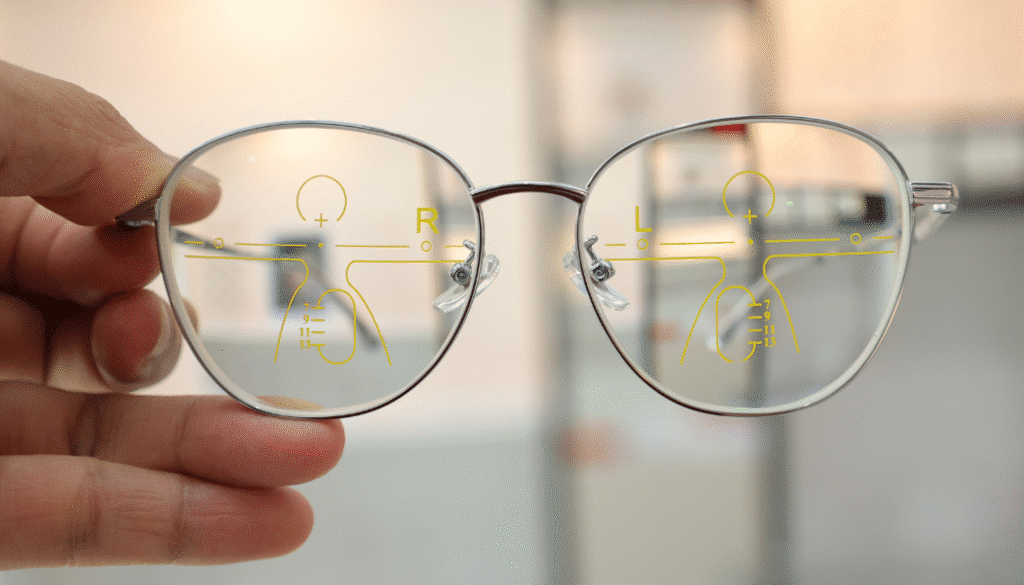
Progressive lenses, sometimes called “no-line bifocals,” are designed for people with presbyopia correction lenses. Presbyopia is a common condition where near vision becomes difficult, especially after the age of 40. Many people first notice the problem when they begin holding books, menus, or phones farther away to read clearly.
With progressive lenses, you can see clearly at multiple distances using one pair of glasses. These lenses provide a smooth transition between near, intermediate, and far vision without the sharp dividing lines that traditional bifocals or trifocals have.
Vision lenses are divided into different areas. In progressive glasses, the top portion is usually for distance vision, the middle area is for intermediate vision such as using a computer, and the bottom portion is for close-up tasks like reading.
The smooth design allows you to look naturally in different directions without abrupt changes. This creates progressive lens clarity and more comfortable daily use. Unlike bifocals, you won’t see a line across the lenses, and people looking at you won’t see it either.
Progressives offer several advantages over traditional multifocal glasses. They allow smooth vision transitions between distances, so you don’t need to switch between multiple pairs of glasses.
They also look more natural. Because there are no visible lens lines, progressive glasses resemble regular single-vision glasses. Many patients appreciate the younger appearance and the convenience of one pair for everything.
Another benefit is flexibility. With multifocal eyewear solutions, you can drive, read, work on a computer, or look at a phone without needing to carry different glasses.
Every person’s eyes are different, which means progressives need precise measurements to work properly. During a fitting, your eye doctor will measure your pupillary distance and check the natural position of your eyes. This ensures that the all-distance vision aids are customized for your needs.
Proper fitting is critical. Poorly measured progressives may cause eyestrain or make adaptation more difficult. Always have your lenses fit by an experienced optician to enjoy the best results.
While progressives are helpful, they can take time to adjust to. Some patients report mild blur or distortion in the outer edges of the lens at first. This happens because the prescription powers gradually blend together. With consistent use, most people adapt within a few days or weeks.
The main drawback is cost. Because they use advanced lens technology, progressives are usually more expensive than single-vision or bifocal lenses. However, many people feel the comfort and convenience are worth the investment
Once you adapt, progressives can become your all-in-one solution. Whether driving, reading, or using digital devices, these lenses help you move smoothly between tasks. Many patients say they prefer progressives to juggling two or three pairs of glasses.
If you are tired of switching glasses or struggling with near vision, custom progressive fittings may be the answer. Speak with your eye doctor to see if progressives fit your lifestyle and vision needs.
They are multifocal glasses that correct near, intermediate, and distance vision without visible lines.
Some patients notice blur at the lens edges, but most adapt quickly.
Progressives look more natural and offer smoother transitions, while bifocals may be less costly.
Anyone with presbyopia who wants one pair of glasses for all distances.